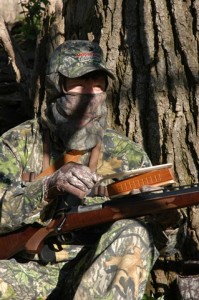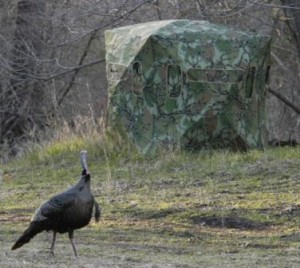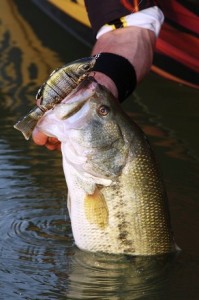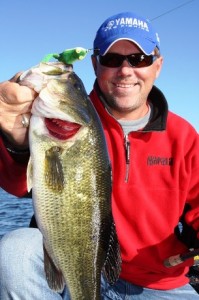By Judd Cooney
Fall Turkey Hunting Secret #7: A Good Dog
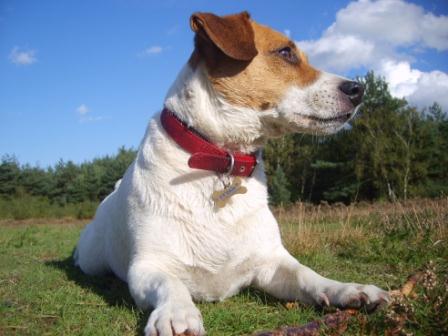 I used to sneak as close as possible to a flock and then run at them waving and gyrating to spook them. I never did screech or holler or even shoot a gun into the air as some fall hunters do. The fast silent approach gets better flock dispersal with less chance of making them skittish about returning to the vicinity later. My turkey chasing days are long past, but I’ve got a little Jack Russell terrier Feisty, that will put turkeys to flight at 40 plus mph.
I used to sneak as close as possible to a flock and then run at them waving and gyrating to spook them. I never did screech or holler or even shoot a gun into the air as some fall hunters do. The fast silent approach gets better flock dispersal with less chance of making them skittish about returning to the vicinity later. My turkey chasing days are long past, but I’ve got a little Jack Russell terrier Feisty, that will put turkeys to flight at 40 plus mph.
She’ll cover the area and put every single bird to flight, then return to me, without my making a sound. The turkeys consider her just another predator with no thought of human disturbance . This factor makes the fall birds much easier to call than when spooked by a hunter on foot. On several occasions she’s put turkeys up in trees right in the area and will tree them just like a good coonhound or squirrel dog. Fall turkey hunting doesn’t get much more fun than watching her work a flock and then calling them back. A number of states allow a turkey dog for fall hunting but check the state laws in your area.
Secret #8: There’s A Lot Of Leeway in Calling
An hour earlier Jack and I had spotted a group of twenty or so turkeys around a waterhole. Would have been an easy task to sneak within 50 yards or so and take a couple with our rifles, perfectly legal during Colorado’s fall season, but I wanted to call in a bird “up close and personal,” for Jack to shoot with a shotgun. We sneaked up below the tank dam and broke over the top on the run, right on top of the flock. Turkeys went every which way squawking and flapping in total panic mode. Perfect.
Jack was still a bit confused by the tactic of spooking the turkeys when we could have stalked them and made a couple of clean kills but he’d never hunted turkeys before and didn’t realize this was one of the main tactics of hardcore turkey hunters for calling fall birds. I set him up, hidden in a clump of oakbrush and got 30 yards behind him in another dense clump of brush. We’d agreed to wait 45 minutes and then I’d start calling and try to bring the scattered birds back to where they were separated.
The yelping was the worst imitation of a hen turkey I’d ever heard. It sounded like rubbing a broken bottle across plate glass. Painful! I figured my hunting partner, Jack just couldn’t pass up the chance to call in his first fall turkey. Jack was a government trapper, one of the best predator callers I knew and a darn good elk caller as well. But, jeez, his turkey calling was enough to scare even a tone deaf turkey out of the country.
A few minutes was all I could take of the raucous racket and horrible hen calls so I eased up and stomped around the intervening brush to get Jack to shut up. Couldn’t believe my eyes OR ears when an old hen turkey stepped out of the brush and cut loose with the most awful calling I’d ever heard. Proof positive there’s a lot of leeway in turkey calling sounds.
Jack thought I was the one making the atrocious sounds until the hen came running around the bushes. He removed her from the gene pool with a well-placed load of #5’s.
Secret #9: Spot & Stalk Is Hard!
Spot and stalk fall turkey hunting is about as challenging as hunting gets and requires a good set of binoculars, spotting scope and lots of patience. Locating the turkey flocks is the easy part, figuring out how to get within range for your bow, shotgun or rifle is a bit tougher and the most challenging segment is actually getting close enough for a killing shot. If you want to add a bit more challenge to your spot and stalk fall turkey hunting, limit yourself to only hunting for a trophy-sized longbeard. I guarantee you’ll earn the trophy beard and spurs. You’ll also catch an incurable case of fall turkey hunting fever.
For a great knife to field dress and prep your bird for mounting, click here
How do you feel about fall turkey hunting as opposed to spring turkey hunting? Leave a comment:
3,925 total views, no views today



